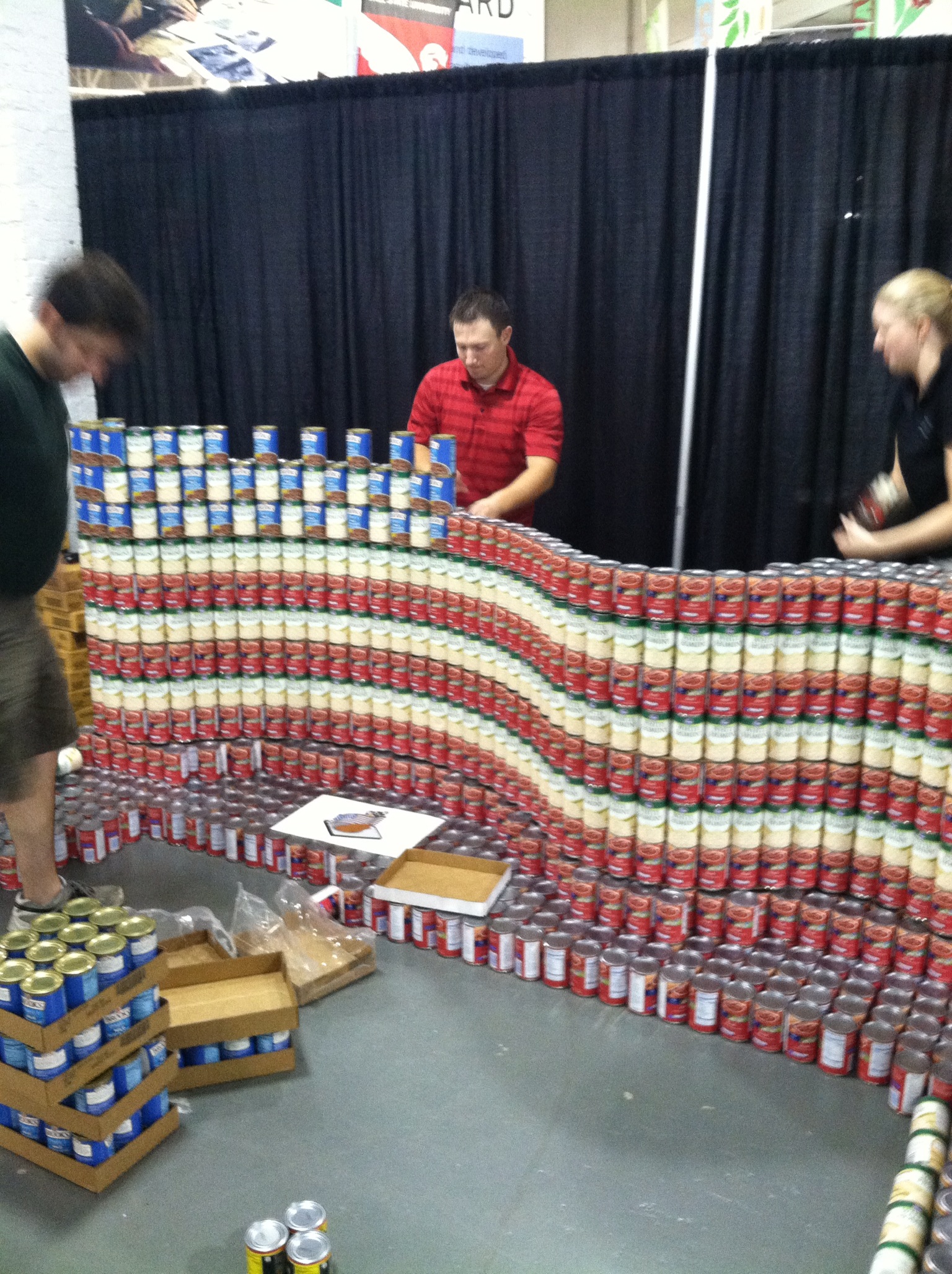2012 CANstruction
This year, I held a larger role in our company’s involvement with the annual “food drive” competition, cleverly named, CANstruction. This year, the theme was “Year of the Dairy Cow,” with the tagline “Celebrating the Hoosier Spirit.” It is always encouraged to try and incorporate this into the design if possible, but not necessarily mandatory.
This year, in our brainstorm session, we tried thinking along the lines of the “Got Milk?” slogan. A few minutes later and we are talking about the 2012 Olympics. Sure, we switched to something that was current right away, but let’s be honest, that’s usually what wins. Besides, athletes drink milk, so we are totally keeping with the theme.
There are several different awards to win, but it’s really the “people’s choice” that is the coveted prize.
This year, the awards are as follows:
· Best Meal
· Best Use of Labels
· Structural Ingenuity
· Juror’s Favorite
· People’s Choice
· Most Cans – New Award
Preliminary Design - Revit Model
Our design this year will include The American Flag, the Olympic Torch, and the Olympic Rings.
After sketching out some ideas on paper, we started modeling our project in Revit. I took on the bowl and rings while another team member designed the flag. At this point, we have no idea how this is going to work or be constructed, but we needed to start somewhere.
It took several long nights of diligent work to figure out how we were going to support our structure. The team decided that we would support certain layers of the model with a thin Masonite board. It took a lot of cutting and sanding with jig-saws to get each layer just right, in order so that they will not be seen, helping to support our can structure.
Lora and Brandon working hard, cutting out the Masonite layers
When build day finally arrives, our volunteers/co-workers make their way to the Indiana State Fair, to the agriculture and horticulture building, where our firm has an allotted space (10′X10′X8′) to build our structure. Our fellow competitors are local architecture firms that are all arranged in a tight row on some uneven concrete flooring. It is important when stacking cans, to be very aware of your surroundings – If not for your own clumsiness…sabotage.
It’s important that while stacking cans, everyone is very aware of their surroundings, so no one accidentally bumps into the structure. It’s a little frustrating in the beginning to get things planned out, but once you have a good foundation, it’s pretty easy after that.
Laying the foundation. Its very important that we figure out the bottom couple layers because they will be the starting point from which everything is resting on. It is especially difficult figuring out where the floor is most level to build on.
Stacking the first couple rows for the flag. In this photo, you can also see our first layer of structure to help steady the cans as we stack multiple layers on top of one another.
The flag progresses.
Finished. Flag, Olympic rings, and Torch.



